Rayman Origins, Beyond Good & Evil and the state of the games industry: An interview with Michel Ancel
Rayman's creator and lead writer Gabrielle Shrager chat about their creative process, plans for BG&E II and the importance of fun
GR: Since the last Rayman game came out, how has the audience changed, and how have you changed, and how is that reflected in Rayman Origins?
MA: The levels you’ve played are good, but are not polished yet. I think the way we polish the game is the main thing. We now know more how to make a high-quality kind of game, and we’ve all seen too much… of course, with design, we are a bit more experienced. And we have more processes now to fine-tune the game and try to make it better. We really know where we are good and where we are bad. When we started a long time ago, we were just making things and not really analyzing what could make them better or not. But now, with time, we try to have more methods to understand how to make the game better.

GR: Do you see many differences in design philosophy between the way that American, European and Japanese developers approach games?
MA: I would say maybe 10 or 15 years ago, yes, there were differences. Because maybe videogames were perceived as a very authorial. Not authorial, but… it was more about experiencing. And today, there are some genres where you can try to make your game, and you don’t have to rewrite everything from scratch. On one side, it’s good, and on the other it’s not so good.
The good part is that you can make a very creative game, but you don’t have to rewrite the control scheme, and you can say, “OK, I’m going to have the controls of a classic FPS, and my game is going to be about the storytelling,” and maybe you can have an addition of a role-playing game. If you look at Fallout, for example, maybe you play it like an FPS, but it’s more kind of role-playing, it’s kind of classic feeling. Like Mass Effect, too. But the controls are established. And now, it makes European, Japanese and US games closer, because they share the genres more than they did a long time ago.
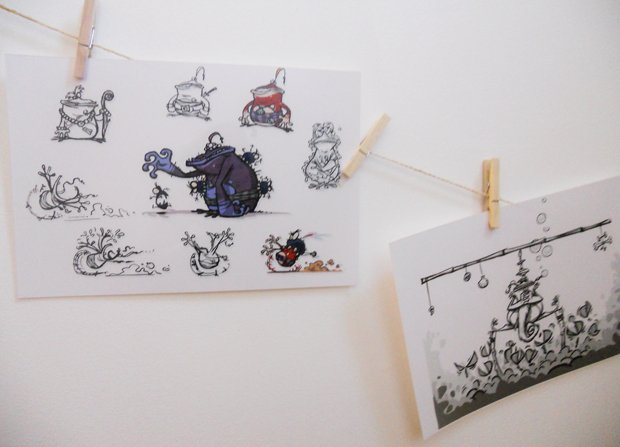
Above: More concept art at Ubisoft Montpelier
The bad thing of that, of two ideas being there at the same time, is that maybe games play the same too much. They seem too close. So it’s still cool to innovate, in terms of controls, and to create new experiences, but it’s not essential, I would say. Sometimes innovation in every part of the game is not the essential thing. Maybe you can say I’m going to innovate in the way I tell the story, but not in the control.
Weekly digests, tales from the communities you love, and more
If you look at Beyond Good & Evil, the controls are classic controls. They are close to Rayman 2, or to Mario 64, and it’s a third-person control. The control of the hovercraft is classical, too. But the way all those things are blended, and the story, makes the game unique. Very special. So that’s my feeling. It’s not just about innovating everywhere, it’s trying to focus on one part of the game. That’s why all those games look not so different in the different countries.
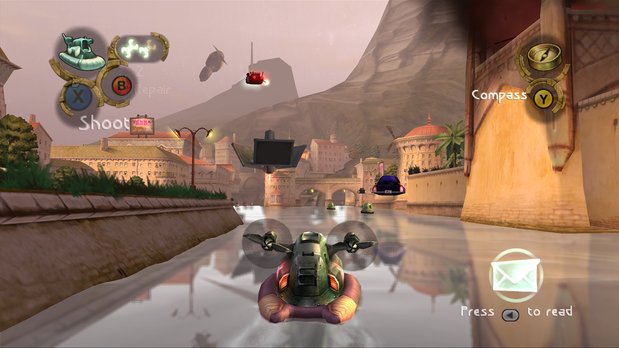
Above: Beyond Good %26 Evil's classical hovercraft controls at work
GR: Speaking of authorial control, when you look at Rayman Origins now, does it feel like it’s your game? Do you feel a certain ownership, or do you feel like part of the team?
MA: For Rayman Origins, it’s quite special, because… it’s more that people, they know that Rayman, I’m very close to this world. And when I started working on the project, they knew that, OK, this is Michel’s world, and we are going to try to render this world. So of course it’s a big teamwork, but it’s very close to… because we try to be very true to the first Rayman. It was a garage game. I did it alone. I did the code, the music on the Atari ST first, so it’s a long time ago. They know that it’s a personal project. But at the same time, I know I couldn’t make this game without their inspiration, and all this art. That’s why the art thing was very interesting, because it’s really the mix between ordering things, and putting their creativity in the game.
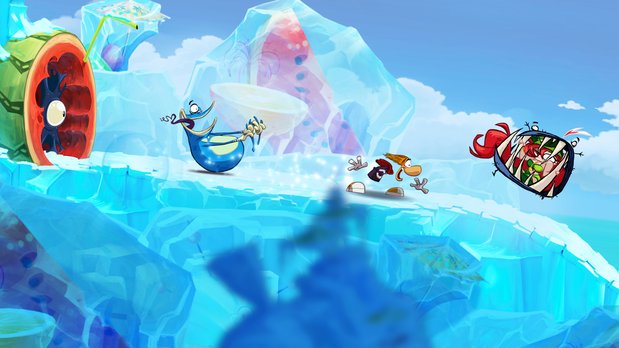
GR: What kind of feedback have you gotten from the Rayman community? How has their feedback played into what you guys have done differently?
MA: In fact, it’s quite early, and my feeling is that the community of Rayman fans is slowly, because we didn’t… we are going to open a blog [The Daily Bubble] to tell the story, how it’s connected to Rayman 1, 2, 3, and I think it’s going to help them understand the work we’re doing with Rayman now. My feeling is that they’re slowly understanding the move, but we don’t know how much we want Rayman’s world to be connected, with the different episodes, and to be immersive. We don’t want to make that game that just looks like level one, level two. We want to give him a soul. And we are working with Gabrielle on that part. It’s not so easy, because it’s a game that involves lots of gameplay and level design, and on top of that, we try to make the story connections with all these elements. And I think that Rayman’s fans pay attention to all the details.
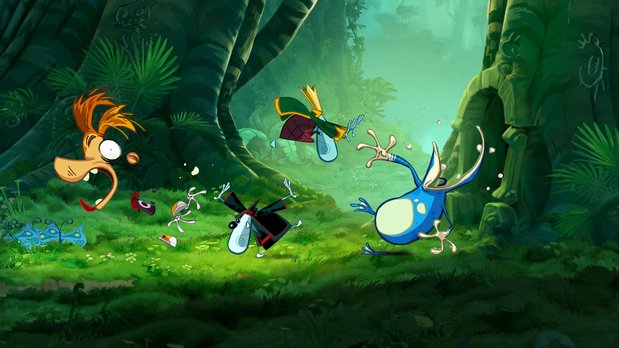
GS: They’ll probably ask us lots of long, hard questions about why we didn’t do this, or why we didn’t do that. And we’re trying, globally, to satisfy them. They’re finding their characters, and the responses that I’ve seen on the forums so far have been, “Oh, it’s the same old wacky universe,” “oh, it’s the hilarious characters.” So the heart and soul that Michel was saying, is there. Fans will be fans; someone will say, “Why didn’t you put this character in? We really wanted to see this character!” But basically, we hope that by giving it a coherency that really doesn’t exist between all of the Raymans, that we can then build on that, bring in the old fans and create new fans, and keep moving and expanding the universe from there.
MA: We are spending a lot of time trying to take the pieces, and collect them all together, bringing the characters – you saw the mosquito, for example. We try really to reconnect and give them more depth. But at the same time, it’s a game that is funny, because it has sometimes no depth. So you put depth to a character that is just silly, and maybe you don’t need to do so.
GS: It’s like overkill.

MA: So it’s a balance between keeping the simplicity, and then trying to explain everything, and at the same time trying to have a sort of coherent world. So we are working quite hard on that.
GR: Is there anything you wanted to do in Rayman Origins that you haven’t been able to do?
MA: I don’t think so. I don’t think so, because Rayman’s world… I have a very good overview of that world, and how to keep the simplicity and keep the creative feeling for that world. So my feeling is that in this Rayman, we didn’t have so much frustration, or logical things that make us… you know, this world is the dream of [the Bubble Dreamer], or the nightmare of that character, so it’s very open in terms of creativity. You can really make the things you want, and the nightmares you want, and I like the fact that, at the same time, this character, this kind of god, is influenced by his creations. It’s like when you’re doing a creation yourself, and then you look at what you’ve done, and you say, “OK, I can modify it,” because it’s talking to you in a certain way. And I like the fact that in this world, the creator is influenced by his creations.
GR: Do you find yourself relating to the Bubble Dreamer?
MA: Somehow, yeah. We creators are kind of making creative bubbles.

GR: With Origins launching during the holiday season alongside a ton of shooters and yearly franchises, what kind of audience are you hoping will connect with this game?
MA: Because the game is HD, I will see the people that have moved to the PlayStation 3 and Xbox 360. They like the good picture of the Blu-ray, and they love 60 frames-per-second games, and they love deep games and good old platformers. I think those can be gamers, they can be the parents that now have stopped playing, but want to play a game, but with something different than what they played with before. So the audience is quite large, in fact. It can be gamers, but it can also be people who are going to move to HD now. Because, you know, the family… in the family, sometimes, you have a gamer, and now gamers are parents. So the core audience is really people who want to retrieve the good old sensation of 2D, but now in HD.
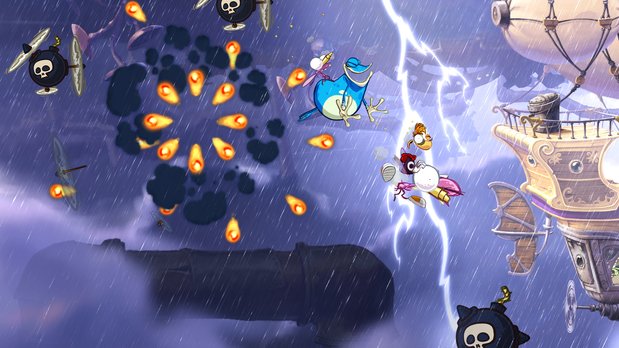
GR: What, if anything, do you think is wrong with the games industry right now? Or right, for that matter?
MA: It’s very hard to emit an opinion on what’s good and wrong, because everything is going so fast. Maybe too fast. Maybe that’s the main thing, is that people are jumping from one thing to another, and the bad thing that could happen to videogames would be to have games that you buy for one dollar, but you just play part of it and you move to another one, another one, another one, and you never really go deep in one game. And this could be a bad thing, the fast food of the games. And then, as old gamers, we could say, “Oh, in our time, we were waiting for a game! A game was something important, but now we have tons of games, and the price cut makes them like fast food.”
Maybe this could be a bad thing. At the same time, it’s a way to enter the videogame world easily, because you can play a game for free or one dollar. So maybe the entrance is easy, but then the game must be longer, or the wait as we make the game must be different. So we have to deal with this new way of making games.
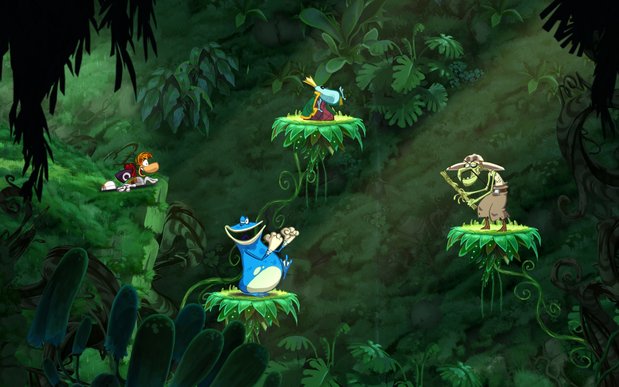
GR: If the industry moved entirely toward casual/iPhone gaming, as some are predicting, would you still be interested in continuing to games under that model?
MA: It’s hard to say. It’s a very interesting question, because are we making games for the audience? Are we making games for making tons of people play our game? And do we want people to be hypnotized by the game, like some games where you play hours and hours and hours, doing the same thing all around just to increase your XP? Or do we want games that really make you think differently and discover new things? I think it’s very interesting to try to manage those elements, and try to keep doing good games in this context.
Sep 29, 2011


Beyond Good %26 Evil: A brief, spoiler-free tour
Take a look at what you missed when you didn't play one of the all-time best PC games ever



